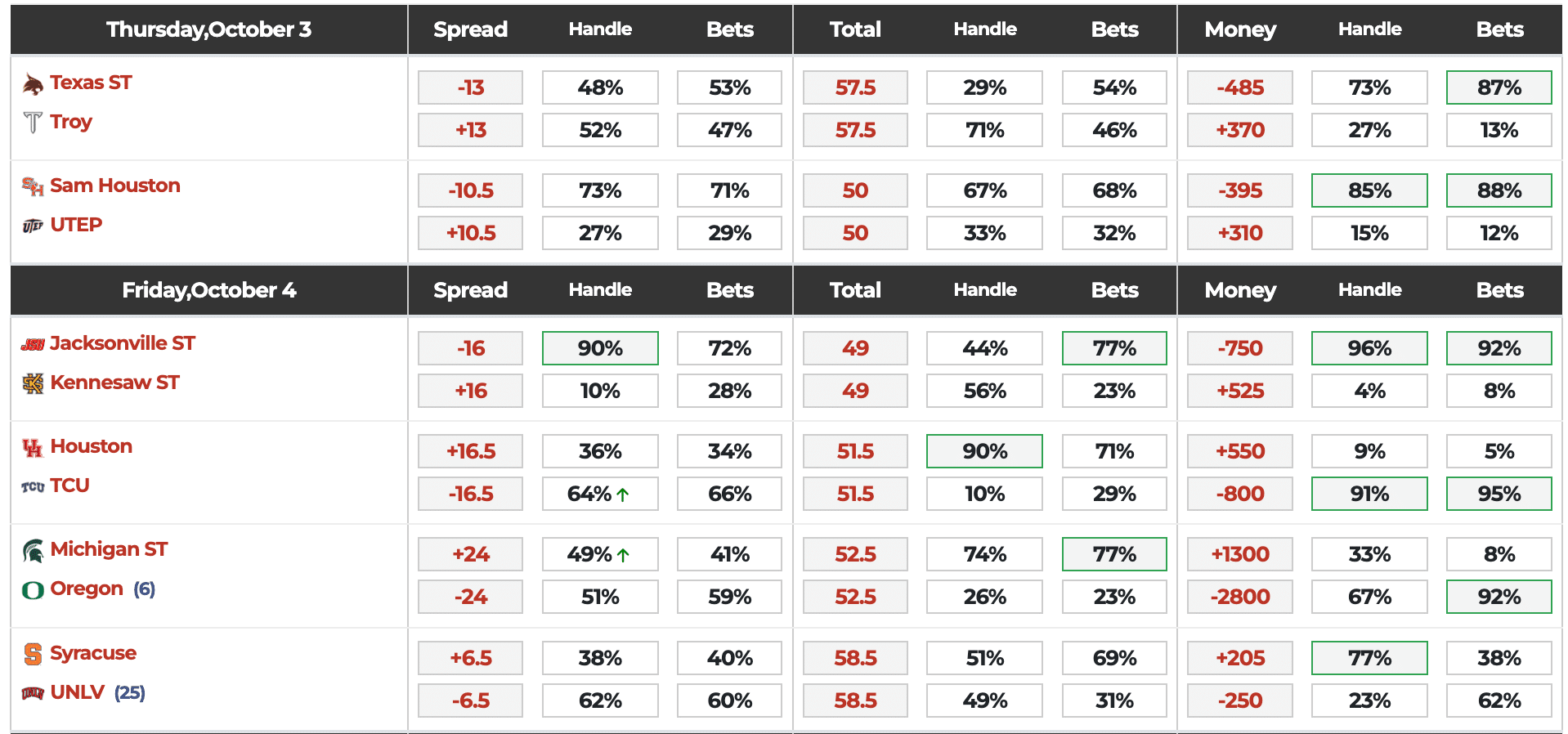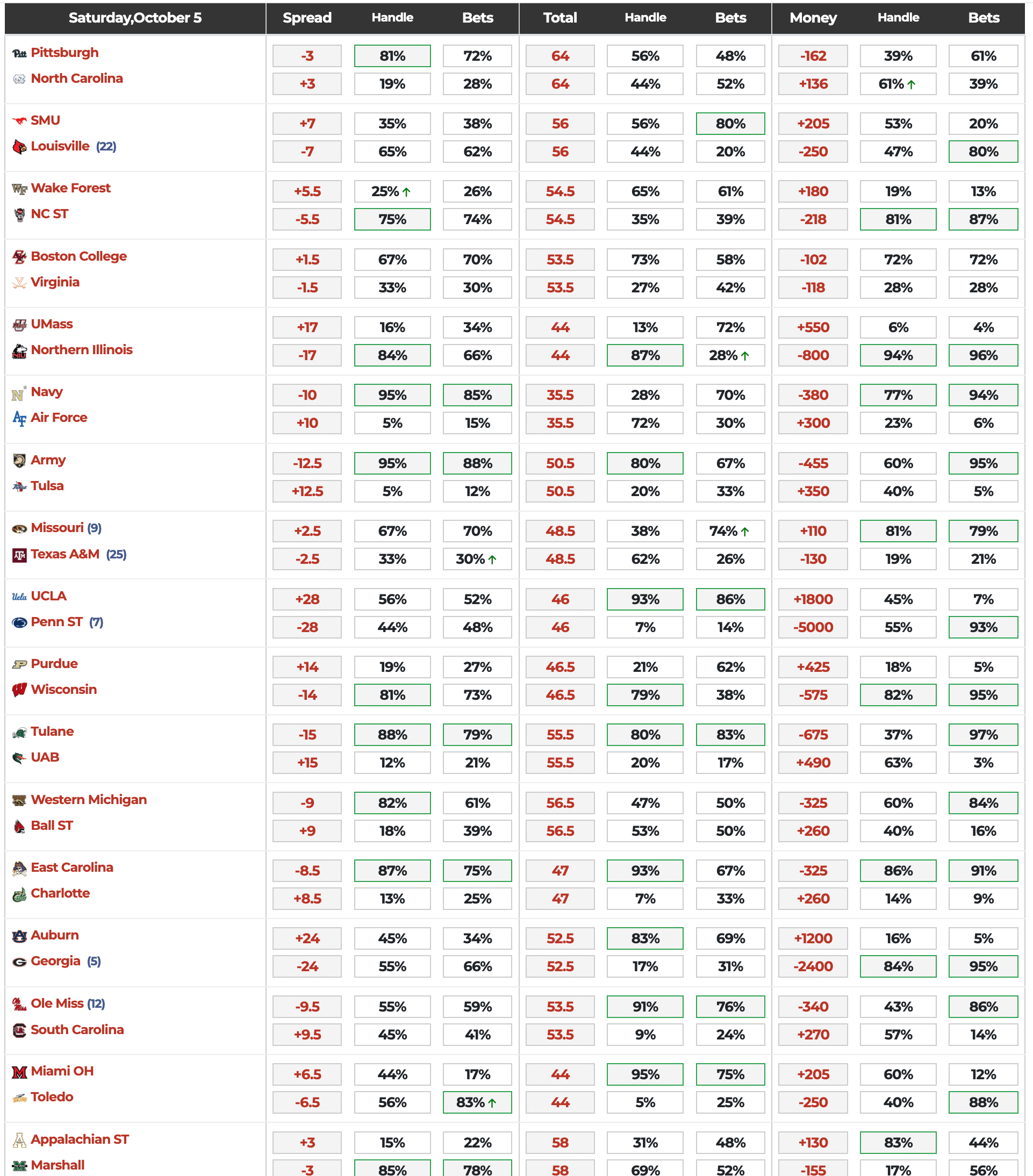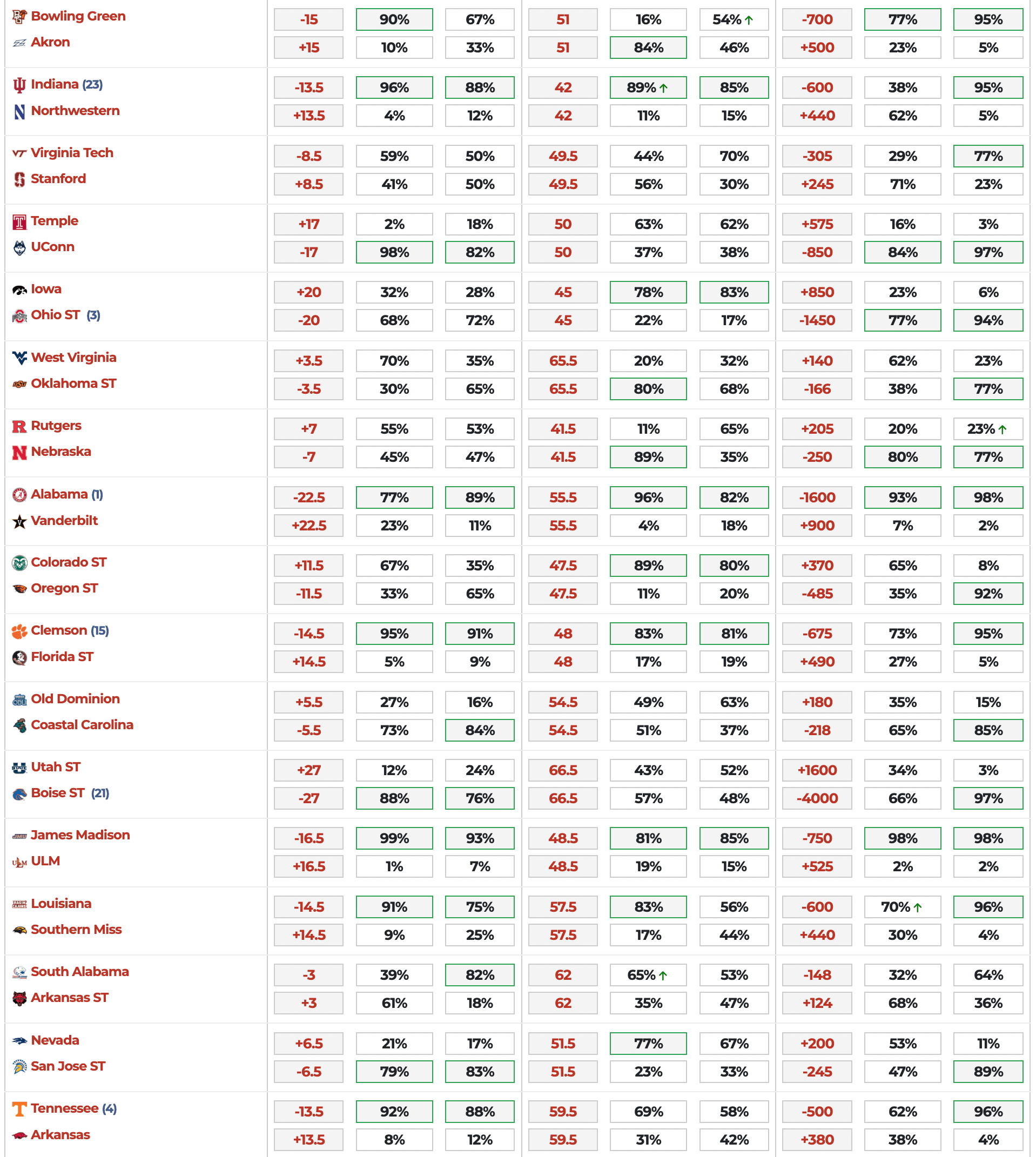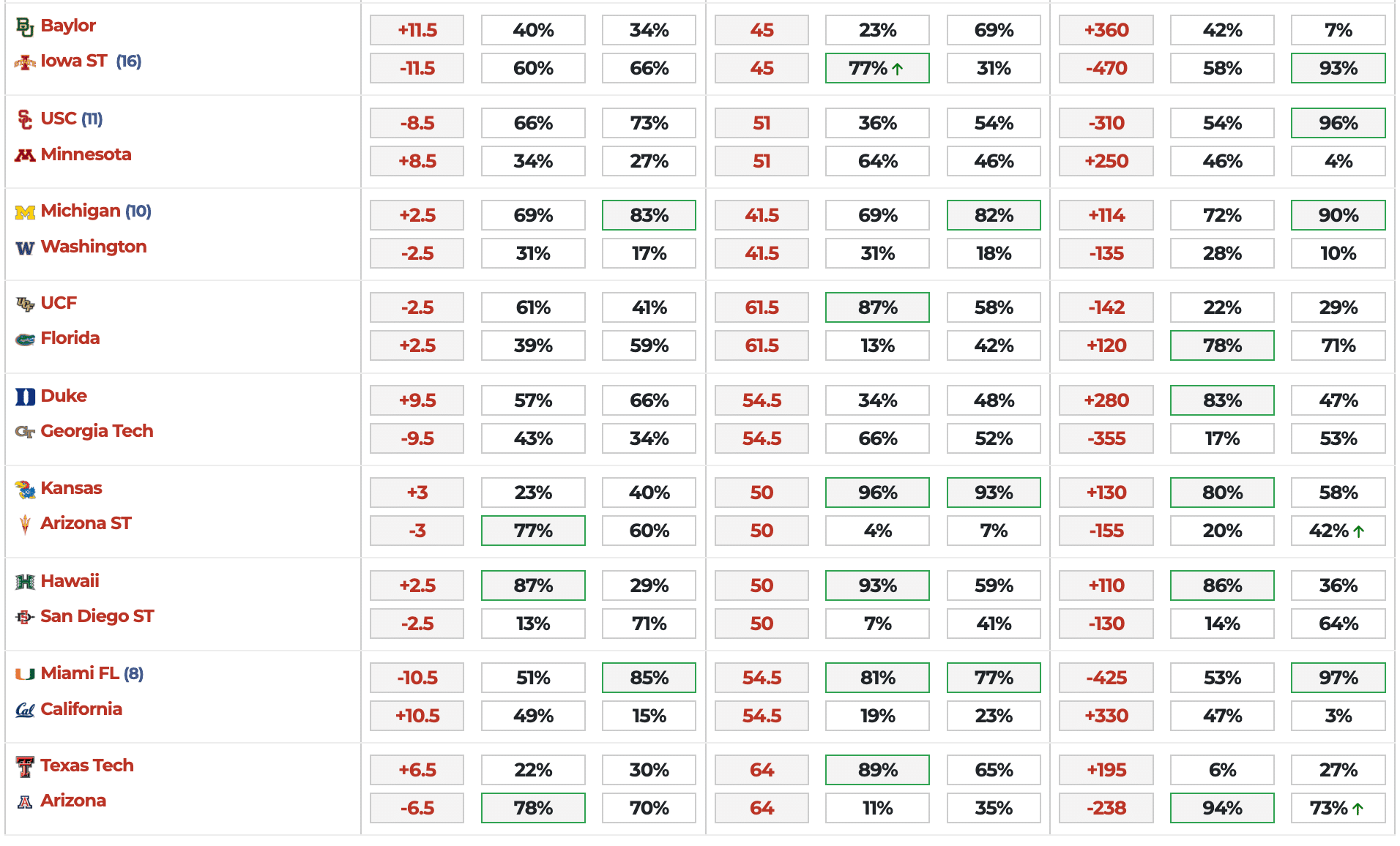Using public betting data is all about reading between the lines and outsmarting the masses. You’ve got to be willing to zig when everyone else is zagging. The public might be loud, but their money-making skills? Not so much.
Which Teams Are Bettors Backing for CFB Week 6?

How To Use This Data To Gain An Edge
When it comes to winning college football bets, the public is like that one friend who always picks the flashy team, only to crash and burn halfway through the season. Betting with the crowd might feel cozy, but if you want to make it rain, you’ve got to step off the bandwagon and dive into the world of public betting data.
1. Fade the Public: Picture this: the betting public is like a herd of cattle, all stampeding in one direction. The sportsbooks know this and set lines to exploit it. When 70% of bettors are on one side, my eyebrows shoot up faster than a frat bro at a tailgate party. It’s not that the public is always wrong, but when they’re overwhelmingly on one side, it’s often time to consider betting the other way. Fading the public isn’t just a contrarian play; it’s like finding a hidden door in a Vegas casino—a sneaky edge that can lead to the money.
2. Sharp Money vs. Square Money: Sharps are the pros, the silent snipers in the betting world. They make moves based on data, not hype. If the line moves significantly but the public betting percentage doesn’t match that shift, guess what? Sharp money is at work, and it’s time to follow the smart guys. I’m like a detective tracking down sharp action because where the sharps go, the money usually follows.
3. Overreactions are Free Money: The public loves to overreact. A team gets blown out one week, and suddenly everyone’s acting like their coach is calling plays off a napkin. That’s when I swoop in like a thief in the night. Public overreactions create value, lines get inflated, and underdogs become way juicier. The key is to know when a bad game was a fluke and when it’s a sign of deeper problems. I’m not just betting teams; I’m betting psychology.
4. Watch the Line Movement: Lines don’t just move on their own, they’re nudged by money, injury reports, weather updates, and, most importantly, the bookies’ desire to balance action. If a line opens at -3 and suddenly shoots up to -6 without a significant public percentage shift, I know the sharps have been hammering it. That’s a cue to either ride with the professionals or stay away altogether.
5. Don’t Chase the Favorites: Public bettors love favorites like a kid loves candy. But here’s the thing, favorites don’t always cover. Public darlings with big spreads are traps disguised as gifts. I don’t blindly take the points; instead, I ask myself, “Would I be comfortable taking the underdog with my hard-earned cash?” If the answer is no, it’s probably a no-go.
6. Embrace the Ugly Underdogs: Betting the unpopular teams is like ordering anchovies on pizza, it’s not for everyone, but it’s where the flavor is. When the public hates a team, that’s often where the best value lies. It’s not glamorous, and you won’t be the life of the party, but the underdogs are where you find hidden gems. Trust me, there’s nothing sweeter than watching your +7 underdog cover while everyone else cries over their busted parlays.
7. Ignore the Noise, Trust the Data: There’s more noise in public betting data than in a college football stadium. Hot takes, injury hype, revenge narratives, they’re all smoke and mirrors. I filter through the noise, look for sharp action, line movement, and where the public is blindly throwing cash. Betting is a chess game, not checkers, and I’m here to outsmart the crowd, one bet at a time.


